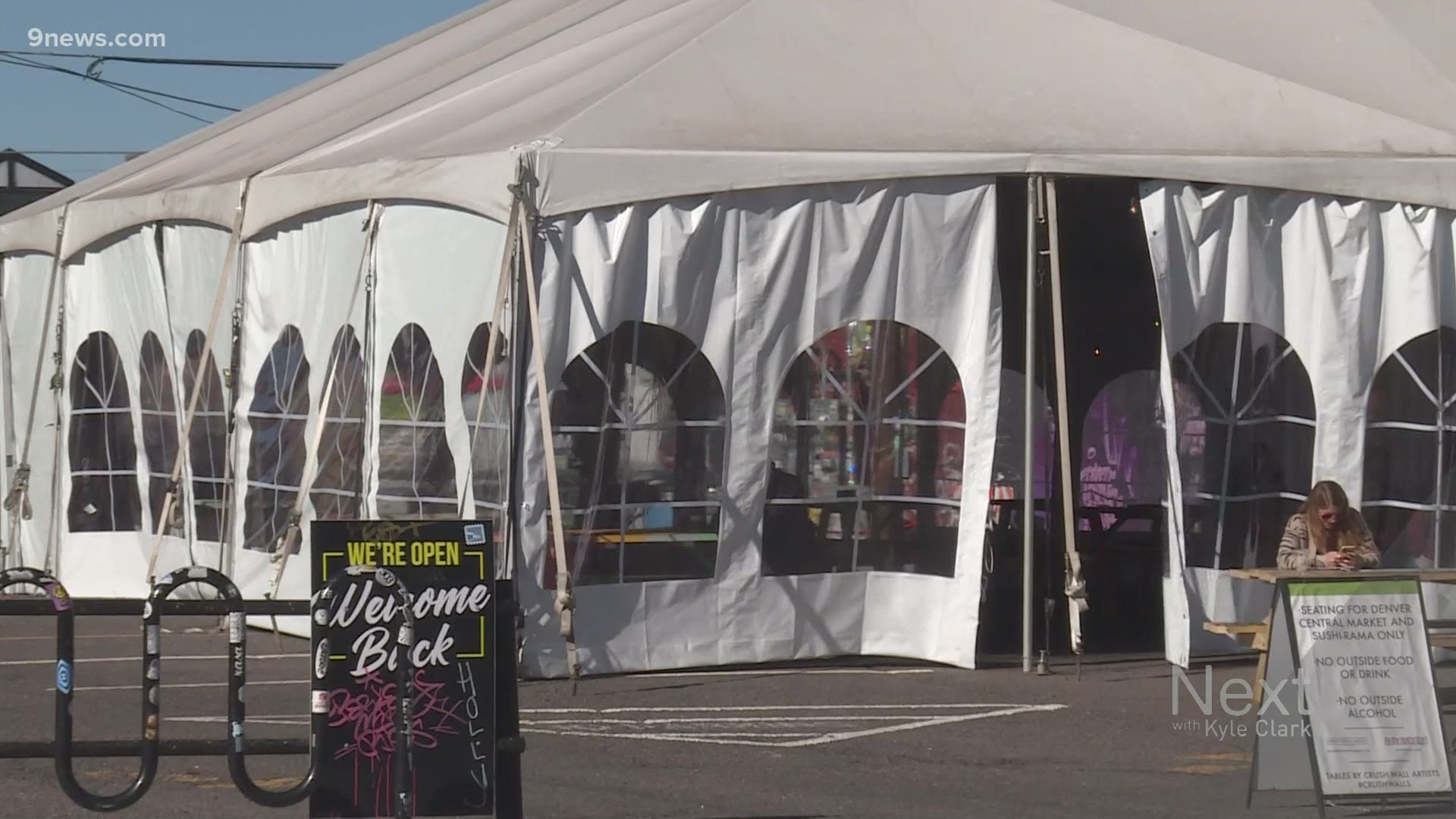DENVER — COVID-19 capacity restrictions are tight in many counties.
Based on the state's county-by-county dial-dashboard, two dozen counties are in "Level Orange," meaning high risk.
With high risk, comes more restrictions.
Restaurants, for example, can only operate at 25% capacity, up to 50 people in Level Orange.
Level Yellow allows 50% capacity.
The levels are based on:
- New cases
- Percent positivity
- Stable or declining hospitalizations
With Denver metro area restaurants having to abide by 25% capacity limits, you've no doubt seen outdoor structures popping up near your favorite dining spot.
Some are large tents; others are big enough for one party.
The large tents come with risk.
"Once the guidelines were actually given that a tent could be considered indoors, we chose to try to find a smaller setting," said Aileen Reilly, co-owner of both Beast + Bottle and Coperta northeast of downtown Denver in Uptown.
The Colorado Department of Public Health and Environment has provided guidance on indoor dining that takes place in an outdoor structure.
If it's a large tent with four walls and a ceiling, your outdoor dining option is really considered indoor, and must abide by the indoor capacity limits.
RELATED: Denver’s outdoor dining program has saved $287 million in revenue for restaurants, city estimates
If the outdoor structure has three walls and one side open, it's still considered indoors.
If the structure has two open walls opposite of each other, it is considered outdoor because it allows for open-air ventilation. An outdoor classification comes with unlimited capacity, as long as six-feet social distancing between parties is taking place.
If the structure has two closed walls that are adjacent to each other and two open walls adjacent to each other, that is considered an indoor structure because of poor air circulation, and must abide by indoor capacity limits.
Reilly chose individual greenhouses for her two restaurants.
"We were down to 30 seats indoors at Coperta, and our greenhouses are now giving us an additional 36," said Reilly. "It's about a $1,200 investment per greenhouse, which we find to be a good enough benefit. Having all that additional seating is something that we really need."
"We have heard from restaurants is that, on average, they need 75% capacity to survive. That being said, many of these restaurants, even with their added outdoor capacity, didn't get up to 50%," said Sonia Riggs, CEO of the Colorado Restaurant Association.
The Colorado Restaurant Association has helped guide restaurants through dining room closures, and now limited capacity.
"We just did a recent survey, they were telling us previously that they were spending $6,000 on their outdoor spaces, now we're hearing, on average, about $17,000," said Riggs. "This isn't the one thing that's going to rescue them. It's things like changing your menu, reducing staff, making sure that you've got capacity (and) can you look at food costs or costs in other ways."
For restaurants that have constructed large tents, if they have walls that can roll up, those locations can have flexibility. On warm winter days and nights, they can roll the walls up and be considered an outdoor facility with unlimited social-distanced capacity. On cold or snowy days, they can drop the walls, but have to abide by the county's indoor capacity limitations.
SUGGESTED VIDEOS: Full Episodes of Next with Kyle Clark

